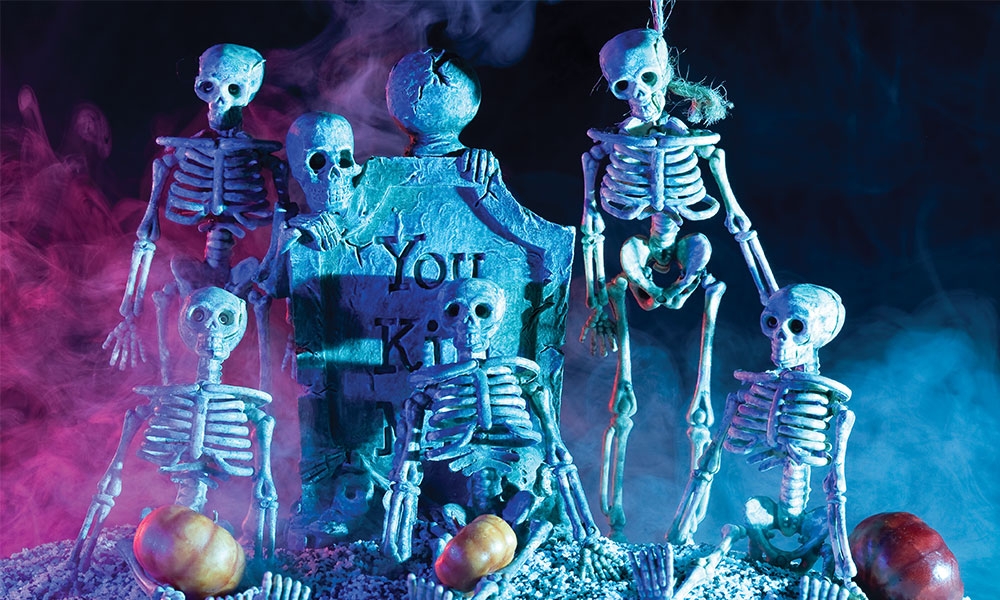
‘Dem bones, dem bones, dem dry bones’ What is our final destination?
Getting your Trinity Audio player ready...In one of the neighborhoods near where I live, there is a household that has erected on their front lawn a remarkably realistic, 12-foot-tall model of a human skeleton. Ostensibly, the model is for Halloween, but this gruesome object has been dominating the skyline uninterruptedly for months. You kind of get the impression that, having been resurrected from some oversize grave nearby, the skeleton liked the idea of life above the ground and staunchly resisted entreaties to go back to bed. Either that or, having spent hours trying to get the thing to stand upright, the owner couldn’t be bothered going through the whole rigmarole of dismantling it.
In one of the neighborhoods near where I live, there is a household that has erected on their front lawn a remarkably realistic, 12-foot-tall model of a human skeleton. Ostensibly, the model is for Halloween, but this gruesome object has been dominating the skyline uninterruptedly for months. You kind of get the impression that, having been resurrected from some oversize grave nearby, the skeleton liked the idea of life above the ground and staunchly resisted entreaties to go back to bed. Either that or, having spent hours trying to get the thing to stand upright, the owner couldn’t be bothered going through the whole rigmarole of dismantling it.
In a similar vein, another neighbor has a tombstone embedded in their lawn with the top half of a skeleton clawing its way out of what would be the grave. The tombstone has the letters R.I.P. engraved on it. Nobody has yet seen the irony …
These inept representations of death are meant to be spooky. But for the Christian, there is a deeper message. They are memento mori, reminders that we too will, late or soon, go through the process of dying. Apart from the evident tastelessness of these garish monstrosities, they do, perhaps reluctantly, make us think of what our ultimate destination will be. They may put us in mind of the phrase that the priest uses on Ash Wednesday, “Remember you are dust and unto dust you will return.”
In our modern world, of course, no one likes to be reminded of the shortness of life or the baleful inevitability of death. We tend to distract ourselves with “noise,” with healthy or even unhealthy pursuits. We might do anything to avoid staring death in the face. And even at funerals, when the contact with death becomes unavoidable, we have skilled undertakers who ensure that the deceased loved one looks astonishingly healthy, in fact much healthier than when they were alive.
But for the Christian, the contemplation of death has a different significance. We believe that this life is not all there is to the equation. We believe that there is a destination that we are headed for, where God “will wipe every tear from their eyes. Death will be no more; mourning and crying and pain will be no more, for the first things have passed away.” (Rv 21:4)
To get there, to reach that final, happy journey’s end, we must live life according to the two great commandments: loving God, and loving our neighbor as ourselves. Indeed, love is the principal criterion that we will be judged on. God will not review our lives, looking for whether we were successful in business, popular among our friends, awash with money, influential, physically attractive, or well traveled. Instead, we will be weighed in the balance of love. But before we throw up our hands and groan, “I’m an abject sinner! What chance have I got!” it is worth considering those encouraging words from St. Peter’s first letter, “Above all, maintain constant love for one another, for love covers a multitude of sins.” (1 Pt 4:8) The conviction that gives us confidence is that our God is a God of mercy as well as justice.
This month, the Church encourages us to remember the dead, whether they are the holy souls in purgatory or All Saints who have gone before us into the dazzling bliss of heaven. We remember our deceased relatives and friends, not to be maudlin or nostalgic, but so that we can pray for them, just as they pray for us. And those prayers themselves are acts of love that will not be overlooked when our own time comes to pass from this life.



